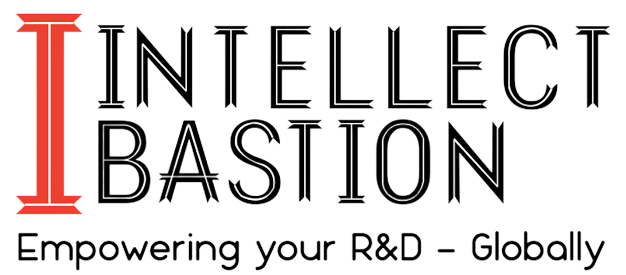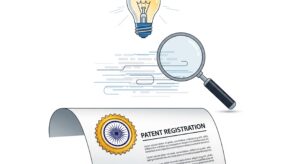The need to protect transformative concepts has become vital as the world races against competitors. A patent grant under law provides all parties from entrepreneurship to start-up founding and independent inventing with exclusive rights for their patented innovation. Your first decision for patent application filing in India or globally leads to choosing between a provisional or complete patent filing format.
The ability to distinguish key differences between these two patent options will help you select the appropriate method for effective intellectual property protection. The following article demonstrates clear distinctions between these options to enable readers to select correct development paths for newly invented technologies.
What is Patent Application?
Defining the distinctions requires us to first comprehend the essence of patent applications. Combining with a formal request submitted to a patent office (such as the Indian Patent Office) an invention receives patent office recognition for exclusive rights over this invention through patent application. Upon approval your invention receives protection that stops any other person from producing making or selling it without your authorization.
There exist two main categories of patent applications including Provisional Patent Application (PPA) together with Complete Patent Application (CPA).

What is a Provisional Patent Application?
A provisional patent application functions as an initial filing for securing your invention date protection even when your complete application remains unfinished. As a placeholder document you get 12 months to advance your invention while also obtaining resources and determining market readiness.
Key Features of a Provisional Patent Application:
- The priority date receives solid protection by this process because it records your invention’s original filing time against potential challenges from competing patents.
- Your one-year priority period allows full patent application submission until you maintain your established filing date.
- Filing a provisional application does not require complete descriptions or claims thus making the process easier and faster for filing.
- The process of filing a provisional application costs less than preparing a complete application thus making it attractively priced.
- The ‘Patent Pending’ status allows you to maintain credibility while safeguarding against competitors.
Why File a Provisional Patent Application?
- You possess an idea or concept that demands additional development before becoming ready for implementation.
- Your initiative needs short-term protection because you are searching for investment capital.
- Testing an invention’s commercial value comes prior to full patent commitment to determine its market potential.
- You conduct R&D activities while seeking initial defence and protection for the time being.
- The priority date disappears when you fail to file a complete patent application within 12 months from your provisional filing date.

What is a Complete Patent Application?
A complete patent application establishes full disclosure of one invention through detailed legal documentation. The application describes protection boundaries through specific claims which patent authorities verify for newness and patentable quality.
Key Features of a Complete Patent Application:
- Any application needs to provide complete technical information about mechanisms together with its precise claims.
- The awarded rights through patents become enforceable after the application date extends for twenty years.
- As part of the assessment process the patent office performs examination to verify the application complies with legal regulations.
- A full patent grants complete legal protection which stops potential permit violations.
- A patent cannot be awarded through provisional applications because this method does not satisfy the requirements for patent grant.
Why File a Complete Patent Application?
- The patent protection stage would be suitable because your invention has reached complete development.
- Your goal is obtaining exclusive rights that will last a long period.
- Your invention exists at the stage where you are prepared to start commercialization or manufacturing or licensing processes.
- The enforcement of your patent rights requires a legal and protectable patent document.

Key Differences between Provisional and Complete Patent Applications
Feature | Provisional Patent Application | Complete Patent Application |
Purpose | Establishes an early filing date | Provides full patent protection |
Filing Requirements | Less formal, basic description needed | Requires full technical details and claims |
Legal Protection | No enforceable rights, only priority date | Grants legal protection if approved |
Examination Required? | No | Yes, examined for novelty, non-obviousness, and industrial applicability |
Filing Cost | Lower | Higher due to examination and processing fees |
Validity | Valid for 12 months, must be followed by a complete application | Valid for 20 years from the filing date if granted |
Patent Pending Status | Yes | Yes, but stronger protection once granted |
Which One Should You File?

- Your necessity for either a provisional or complete patent application depends on your invention’s development progress.
- Arriving at a provisional patent application becomes the best option for securing early protection when your invention remains not fully developed.
- Your invention needs a complete patent application for commercialization because it is ready for market release.
- The provisional application becomes an excellent solution for safeguarding your patent date with minimal funding because it gives you temporary protection during your complete application preparation process.
- The most effective method to achieve enforceable legal rights at start is by directly submitting a complete patent application
Common Mistakes to Avoid
- A delayed filing of either a complete application or non-completed application beyond 12 months results in the loss of your priority date.
- A provisionally filed application becomes weak if it fails to contain important details since it cannot properly maintain support for the complete application.
- The longer you postpone submitting your complete application the higher chance becomes for competitors to file patents that are similar.
- Using a provisional patent provides only a date for your protection because you need a comprehensive patent for actual protection benefits.

Final Thoughts: Protect Your Innovation Wisely

The process of patent filing demands systematic planning for strategic reasons. The provisional patent application serves as an excellent starting basis for those who require developmental time but want to secure an early priority date. Getting enforceable patent rights demands a complete patent application besides provisional filing.
Your decision about patent filing requires professional advice from patent experts when you cannot determine the right direction. Early protection of your invention will determine your potential for commercial achievement.
Want to protect your ideas effectively? Start with a professional patentability search today!
Turn Your Ideas into Assets with Intellect Bastion!
Protect your innovation with expert guidance from Intellect Bastion. Whether you’re an individual, start-up, MSME, or large company, we simplify the patent filing process for you.


Let’s Get Started Today!
About the Author
Swaroopa Saxena is a Patent Associate at Intellect Bastion, specializing in intellectual property rights. With a strong foundation in biotechnology, she is passionate about helping innovators protect their ideas and navigate the complexities of patent filing and prosecution. Their expertise bridges science and law, empowering clients to maximize the value of their innovations.





